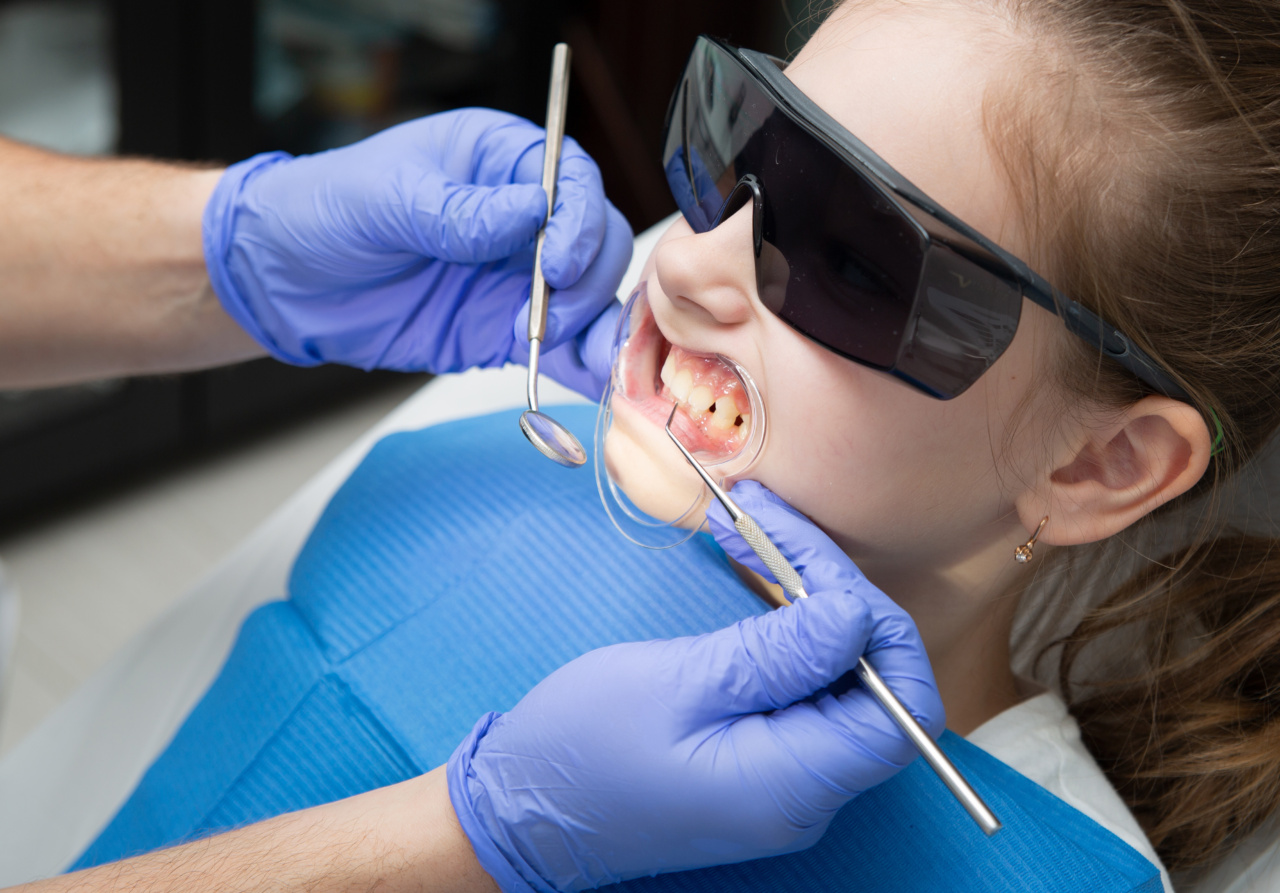Ovarian cysts are fluid-filled sacs that develop within the ovaries of women. While most cysts are harmless and often resolve on their own without treatment, some may cause discomfort, pain, or lead to complications.
Understanding the symptoms, causes, and treatment options for ovarian cysts is critical in managing this condition effectively.
What are Ovarian Cysts?
Ovarian cysts are small sacs filled with fluid that develop within or on the surface of the ovaries. These cysts may vary in size and can be categorized into different types based on their characteristics. The two most common types of ovarian cysts are:.
Functional Cysts
Functional cysts are the most common type of ovarian cysts and typically develop as a part of the menstrual cycle. They usually form when the follicles, which normally release eggs during ovulation, fail to achieve this process correctly.
Functional cysts can be further divided into:.
Follicular Cysts
Follicular cysts occur when the follicle in the ovary fails to rupture or release an egg. Instead, it continues to grow, filling with fluid and forming a cyst. These types of cysts often resolve on their own within a few menstrual cycles.
Corpus Luteum Cysts
Corpus luteum cysts form when the follicle releases an egg during ovulation but doesn’t fully dissolve. Instead, it seals off, fills with fluid, and develops into a cyst.
These cysts typically empty on their own after a few weeks but can grow larger and cause pain in some cases.
Other Types of Ovarian Cysts
Aside from functional cysts, there are other types of ovarian cysts that may develop, including:.
Dermoid Cysts
Dermoid cysts, also known as teratomas, are growths that contain tissues such as skin, hair, and teeth. These cysts are usually benign, but in rare cases, they can become cancerous.
Endometriomas or Chocolate Cysts
Endometriomas, also referred to as “chocolate cysts,” are cysts that form when endometrial tissue grows outside the uterus and attaches to the ovaries. These cysts can cause severe pain and discomfort, particularly during menstruation.
Cystadenomas
Cystadenomas are fluid-filled tumors that can form on the surface of the ovary. These tumors are typically benign, but a small percentage may be cancerous.
Polycystic Ovary Syndrome (PCOS)
Polycystic ovary syndrome (PCOS) is a hormonal disorder that causes multiple small cysts to form on the ovaries. This condition can lead to irregular periods, fertility issues, and hormonal imbalances.
What Are the Symptoms of Ovarian Cysts?
Most ovarian cysts do not cause noticeable symptoms and are often discovered during routine pelvic examinations or imaging tests. However, larger cysts or those that lead to complications may cause various signs and symptoms, such as:.
Pelvic Pain
Pelvic pain or discomfort is one of the most common symptoms associated with ovarian cysts. The pain may be dull or sharp and can vary in severity. It may be intermittent or constant and may worsen during intercourse or menstruation.
Abnormal Bleeding
Ovarian cysts, particularly those related to hormonal imbalances, can cause abnormal bleeding. This can manifest as heavy or irregular periods or breakthrough bleeding outside of the usual menstrual cycle.
Bloating and Abdominal Swelling
Ovarian cysts can sometimes cause bloating and an increase in abdominal girth. This can make the abdomen feel full or distended, similar to the sensation experienced during menstruation.
Urinary and Bowel Issues
If an ovarian cyst is large enough, it may exert pressure on the bladder or bowel, leading to symptoms such as frequent urination, urgency, difficulty emptying the bladder, constipation, or changes in bowel movements.
Changes in Menstrual Cycle
Ovarian cysts can disrupt the normal hormonal balance, causing changes in the menstrual cycle. This may include irregular periods, missed periods, or shortened or lengthened cycles.
Infertility
While most cysts do not affect fertility, certain types, such as endometriomas and those associated with PCOS, can interfere with ovulation and reduce the chances of conception.
If you are struggling with infertility, it is crucial to seek medical evaluation and diagnosis.
What Causes Ovarian Cysts?
The exact cause of ovarian cyst formation is often unknown. However, several factors and conditions may contribute to their development. These include:.
Hormonal Imbalances
Hormonal imbalances, particularly an excess of estrogen or an imbalance between estrogen and progesterone, can affect the normal functioning of the ovaries and increase the risk of cyst formation.
Endometriosis
Endometriosis, a condition characterized by the abnormal growth of endometrial tissue outside the uterus, can lead to the formation of cysts known as endometriomas.
Polycystic Ovary Syndrome (PCOS)
PCOS is a common cause of ovarian cysts. In this condition, the hormonal imbalance disrupts ovulation, leading to the development of multiple small cysts on the ovaries.
Pregnancy
In some cases, during early pregnancy, a cyst called a corpus luteum cyst may form on the ovary to provide hormonal support until the placenta takes over this function. Most of these cysts resolve on their own without causing any complications.
Genetic Predisposition
Some women may have a genetic predisposition to developing ovarian cysts. Certain genetic conditions, such as hereditary ovarian cancer syndrome or BRCA1 and BRCA2 gene mutations, can increase the risk of cyst formation.
How Are Ovarian Cysts Diagnosed?
If you experience symptoms suggesting the presence of ovarian cysts, your healthcare provider may recommend the following diagnostic tests:.
Pelvic Examination
A pelvic examination allows your doctor to physically examine your reproductive organs, including the ovaries, and check for any abnormalities or signs of cysts.
Ultrasound
An ultrasound is a common imaging test used to visualize the ovaries and detect the presence of cysts. It can help determine the size, location, and nature of the cysts.
MRI or CT Scan
In some cases, if the ultrasound results are inconclusive or your doctor suspects a complex cyst, they may recommend an MRI or CT scan for a more detailed view of the ovaries and cysts.
Blood Tests
Blood tests, such as hormonal tests or tumor marker tests, may be ordered to evaluate hormone levels, detect any hormonal imbalances, or assess the risk of ovarian cancer.
What Are the Treatment Options for Ovarian Cysts?
The treatment for ovarian cysts depends on several factors, including the type of cyst, its size, your age, and the presence and severity of symptoms. The available treatment options include:.
Watchful Waiting
If the cyst is small, painless, and poses no immediate health risks, your doctor may recommend close monitoring without intervention. They may request follow-up ultrasounds to check if the cyst grows or resolves on its own.
Medication
Oral contraceptives (birth control pills) can help regulate hormone levels and prevent the formation of new cysts. They may also reduce the risk of existing cysts growing larger or becoming symptomatic.
Pain medications may be prescribed to manage any discomfort or pain associated with the cysts.
Cyst Removal
If the cyst is large, persists, causes severe pain, or shows signs of abnormality, your doctor may recommend a surgical procedure to remove it.
This can be done either laparoscopically (less invasive) or through open surgery, depending on the size and complexity of the cyst.
Ovarian Cystectomy
Ovarian cystectomy is a surgical procedure that involves removing the cyst while preserving the unaffected ovarian tissue. This is often the preferred approach for women who still have their reproductive organs and wish to maintain fertility.
Oophorectomy
In certain situations, if the cyst is large, suspicious, or there is a high risk of ovarian cancer, your doctor may recommend the complete removal of the affected ovary (oophorectomy).
Conclusion
Ovarian cysts are a common occurrence in women, and most often, they do not cause any significant health issues. However, when symptoms arise or complications occur, it is important to seek medical attention.
Understanding the symptoms, causes, and treatment options for ovarian cysts can help women manage this condition effectively and maintain their overall gynecological health.
























